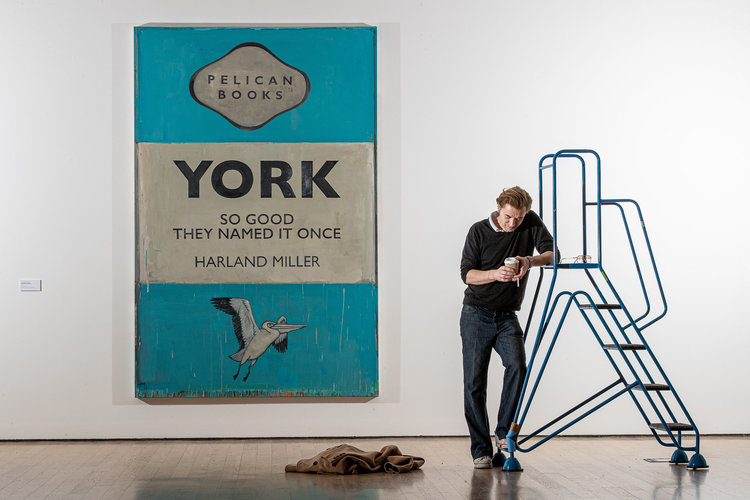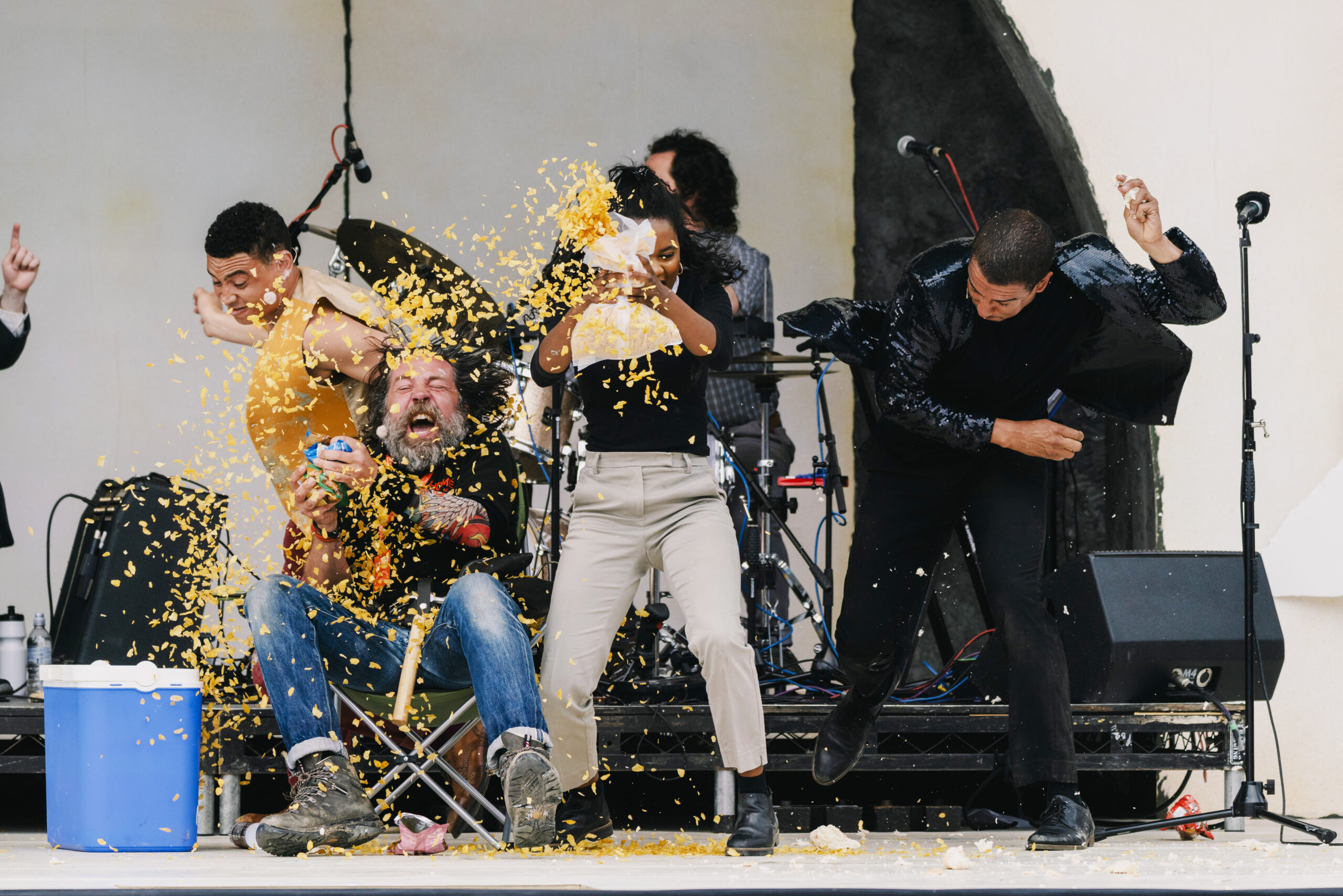First impressions are important. It’s true for job interviews, dating and visiting museums and galleries. As for the latter, it’s a bad start if you’re confronted with a snoozing cloakroom attendant, an empty collection box and wonky signage.
Fortunately, York Art Gallery (YAG) has just spent £8 million refitting the building. A bright welcoming, open hall points visitors in a range of different directions, leading to a number of galleries, each with a different feel and different ways of presenting art. And it is this variety that is perhaps the main strength of this updated gallery – no two display spaces are the same.
Take the display A Picture of York, a mixed bag of artists responding to the city via its architecture, its people and its way of life. There’s a feeling here of art connecting visitors to the city and the varied artistic styles and views are a way for visitors (both locals and tourists alike) to think of York beyond the world-famous image of York Minster and its towers.
The exhibit brings together three views of the city by L. S. Lowry, not previously displayed together. While there’s been quite a bit of hype surrounding these pictures being reunited, the display doesn’t make much of a show of it, allowing them to sit happily alongside the other artists. Missed opportunity? Perhaps.
 Throughout the building there are some well thought-out interpretive touches aimed at encouraging people to engage with art. In the Burton Gallery young visitors are invited to sit on a soft-play version of a French impressionist painting, made out of textiles, echoing the picture. It’s a really simple intervention into the traditional art gallery space but one that suggests YAG has thought about its visitors.
Throughout the building there are some well thought-out interpretive touches aimed at encouraging people to engage with art. In the Burton Gallery young visitors are invited to sit on a soft-play version of a French impressionist painting, made out of textiles, echoing the picture. It’s a really simple intervention into the traditional art gallery space but one that suggests YAG has thought about its visitors.
There’s a toy for children of all ages in the Representing Status exhibition. Visitors are invited to pose for an automated photograph portrait which is then inserted into a digital version of one of the real old master paintings in the room. It’s an invitation to go and find the actual picture and look at the real face in the portrait – another simple yet deceptively clever way of encouraging people who may not necessarily care much for art to look again.
At the heart of the new YAG is the Centre of Ceramic Art – a celebration of all things potted, sculpted, fired and glazed. It can be difficult to entice visitors to look at pots in museums but the curators and designers have made some visually impressive displays which, again, encourage us to look and scrutinise. Rather than displaying their 5,000 (!) ceramic pieces by date, type, country of origin or artist – the way most museums traditionally do – they display them by colour, filling one wall of the gallery with a giant rainbow of pots. So you see old pieces next to new ones and big ones next to small ones. It shows us the full range of ceramics styles in one easy display.
Other pots are on open display in a series of charming room settings. It feels a bit like going to your granny’s house (a pretty cool granny, at that) and almost invites us to touch them, although we need to play by the museum rules so hands off please.
 Yet another room brings us to Mark Hearld’s display The Lumber Room – the result of asking an artist to go through the collection of the museum and gallery and pull out miscellaneous objects. His choices and object juxtapositions are as intriguing as they are hilarious and it’s refreshing to see an artist helping us to have fun in the museum space.
Yet another room brings us to Mark Hearld’s display The Lumber Room – the result of asking an artist to go through the collection of the museum and gallery and pull out miscellaneous objects. His choices and object juxtapositions are as intriguing as they are hilarious and it’s refreshing to see an artist helping us to have fun in the museum space.
Art galleries often have a hard time tailoring their displays to visitors’ needs. We know that art is, by its very nature, off-putting for some and not even on the radar for others. And when it comes to those visitors who choose to step through the door of a gallery, they each come with different motivations and expectations and will consume art in different ways during their visit.
But with the range of approaches to displaying and talking about art at the revamped YAG, it ought to appeal to a wide range of art-going audiences. Having said that, some might criticise this as a weakness of the new displays. It’s true that there is no connected story or message running through the galleries. With a once-in-a-generation chance to revisit how it communicates with its visitors, YAG might have used it to unify its approach. The curators haven’t done that. Instead, the result is a mix of disconnected voices and written styles in the exhibition texts, from art-historical academics to ceramics experts to jolly friend-of-the-people artist. But the resulting patchwork quilt of a gallery makes for a multi-layered visitor experience, meaning there is something for everyone.
 A redevelopment project like this is an opportunity to sort out the building’s recurring problems, from the roofing, lighting, wiring and water to the multiple little jobs. It’s a shame then that even though the gallery was closed for two years and has spent £8 million, there is some lack of attention to detail. Carefully designed object labels are held into freshly painted woodwork with rogue nails. Cabling is on display on some of the gallery floors. And the text on the walls is in need of a good proof-read, with a handful of mistakes found in copy across the building.
A redevelopment project like this is an opportunity to sort out the building’s recurring problems, from the roofing, lighting, wiring and water to the multiple little jobs. It’s a shame then that even though the gallery was closed for two years and has spent £8 million, there is some lack of attention to detail. Carefully designed object labels are held into freshly painted woodwork with rogue nails. Cabling is on display on some of the gallery floors. And the text on the walls is in need of a good proof-read, with a handful of mistakes found in copy across the building.
For all the talk of first impressions, when I visited this week I was greeted not by banners announcing the new gallery, but by a protest. The project has attracted attention of late because of the controversial decision by York Museums Trust to charge £7.50 entrance fee. In the face of increasing cuts to local government funds, councils across the country are being forced to choose between such things as providing social care for the vulnerable or looking after museums. Not surprisingly, the museums and their objects tend to lose out, and so York has opted to recoup some of the money by asking visitors to contribute.
Protesters outside the gallery told me they considered that “this art belongs to us, the people of York” and that “charging an entry fee is the least imaginative way of raising money”. There are, of course, other potential funding streams such as sponsorship, shop sales, café revenue and private events which generate funds while allowing free public access to the collection. York Museum Trust has not responded directly to this public criticism and is in negotiations with the city’s council about what to do next. Meanwhile, York residents are able to get half-price annual membership for £10 if they are in possession of a £5 York Card.
Funding aside, the building and its contents are now safe for another generation and with the interpretive interventions in the building the art is certainly worth another look.
By Steve Slack
Photographs by Peter Heaton
Main image: Hearld collection at York Art Gallery
What: York Art Gallery
Where: Exhibition Square, York
When: Mon to Fri, 10:00am – 5:00pm; Sat: 10:00am – 8:00pm; Sun: 12:00pm – 4:00pm
More info: www.yorkartgallery.org.uk











